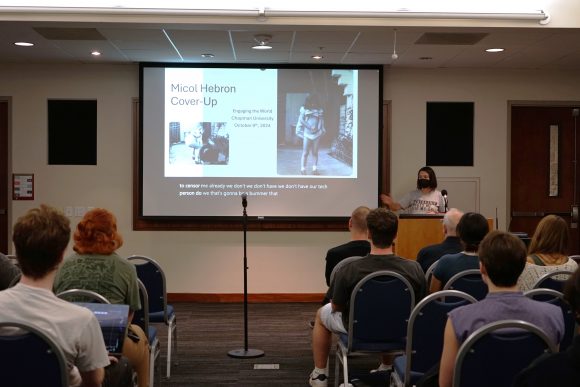
COVER-UP: The Censorship of Art about Gender and Sexuality ETW: Leading the Conversation on Gender and Sexuality
October 29, 2024
Micol Hebron, Associate Professor of Art, recently spoke on censorship of art as part of Wilkinson College’s Engaging the World: Leading the Conversation on Gender and Sexuality 2024 Series.
Hebron, a video and performance artist who has been creating artwork in Los Angeles for over 15 years, spoke on the history of censorship in art and its varied reasons.
Historically, artwork has been censored because of what might be perceived as sexual content, but also due to political ideology. Many of these instances of censorship center around the idea of what is considered “inappropriate” or “indecent” within a culture.
This raises two questions: who decides what is “inappropriate” and how?
In 1989, the US Senate voted to bar the National Endowment for the Arts, one of the primary sources of arts funding in the United States, from supporting “obscene of indecent work” and, specifically, to cut off funds to arts groups that supported exhibitions of photographs by Robert Mapplethorpe and Andres Serrano. The result was a massive loss of funding to artists, especially those from marginalized groups. This is just one example of how institutions have tried not only to censor specific kinds of artwork but also to sanitize what is considered art at all. According to Hebron, other types of censorship include removing all or part of an artwork, covering or burning it, destroying it, blocking or canceling social media accounts, and banning it from schools and/or libraries.

